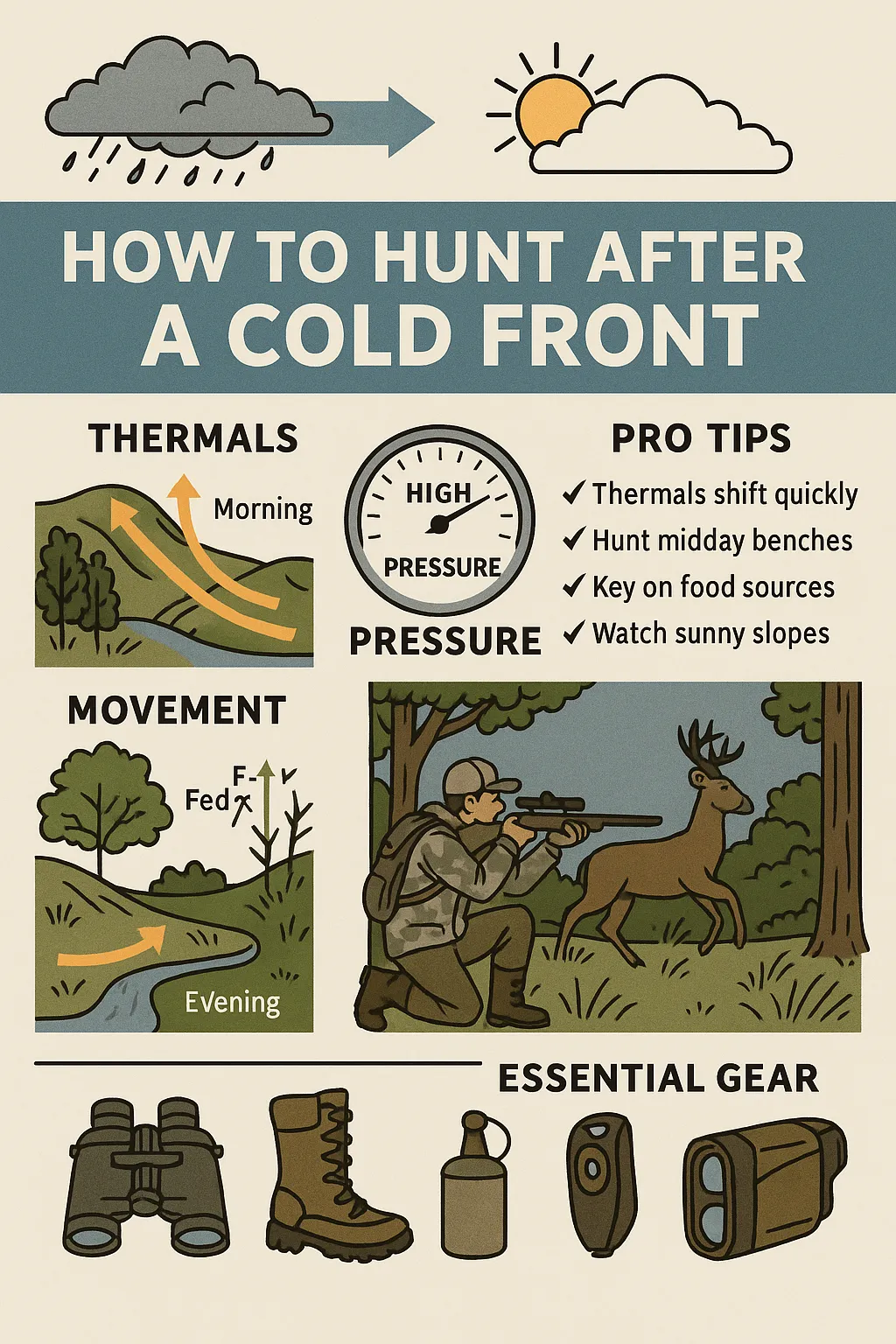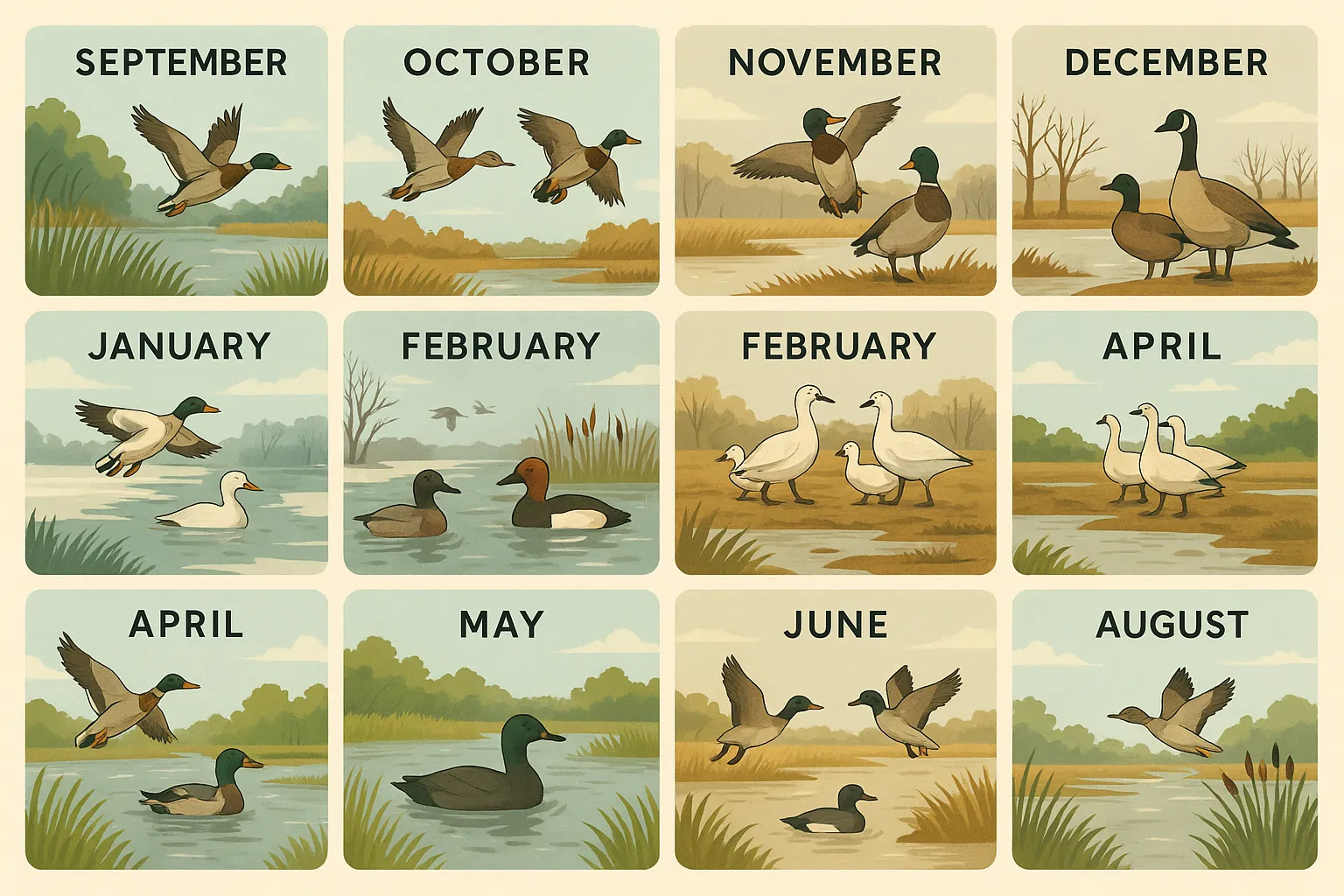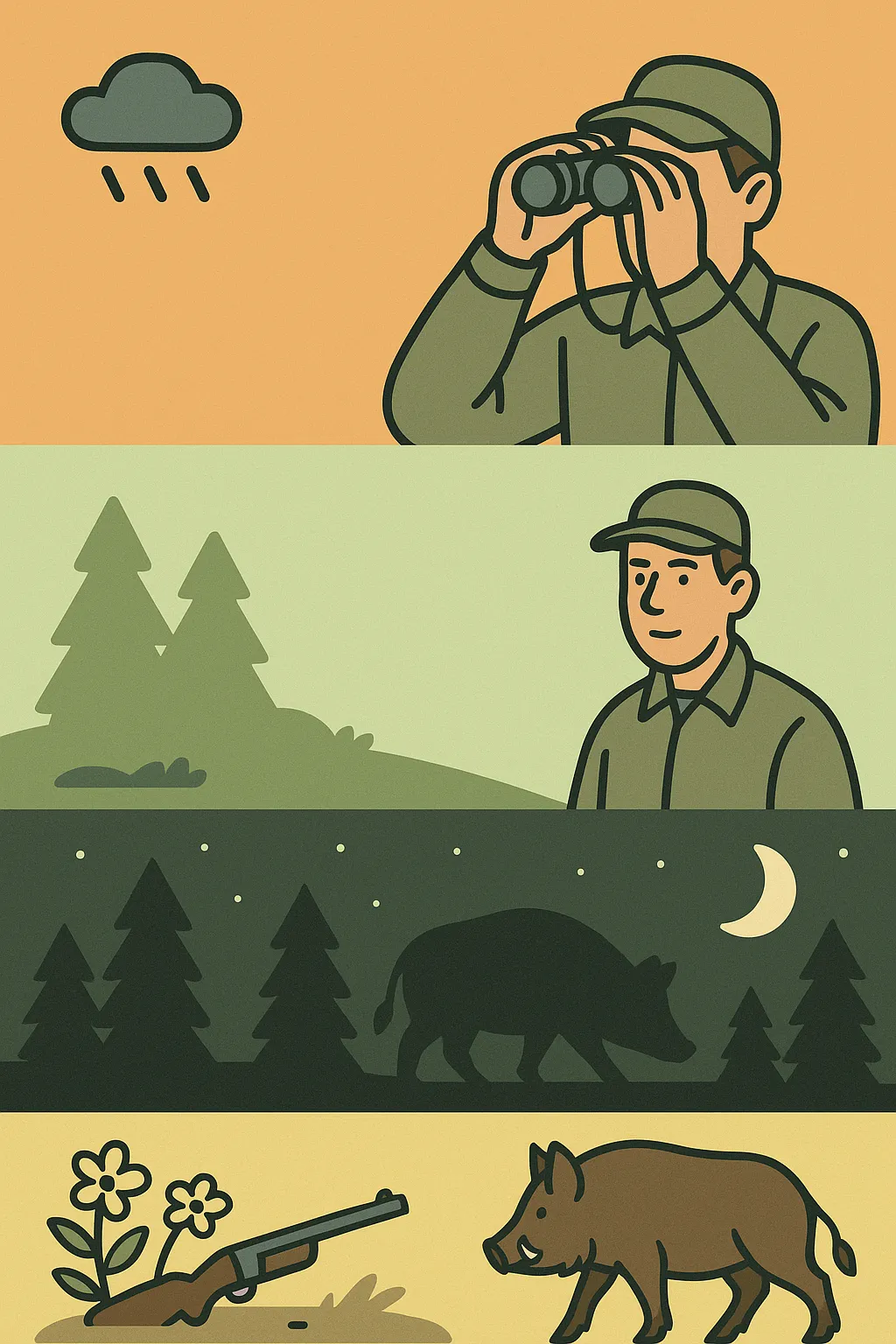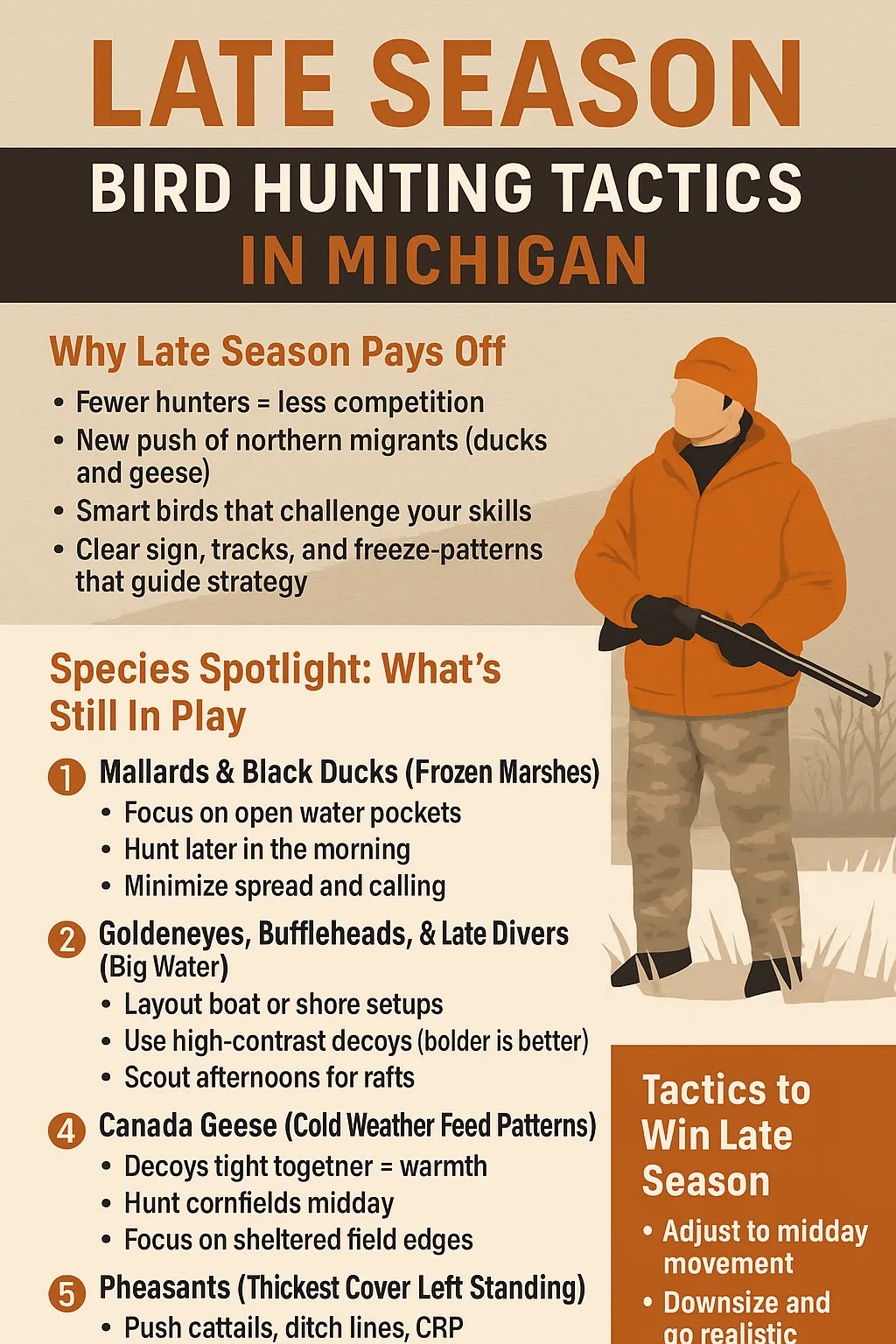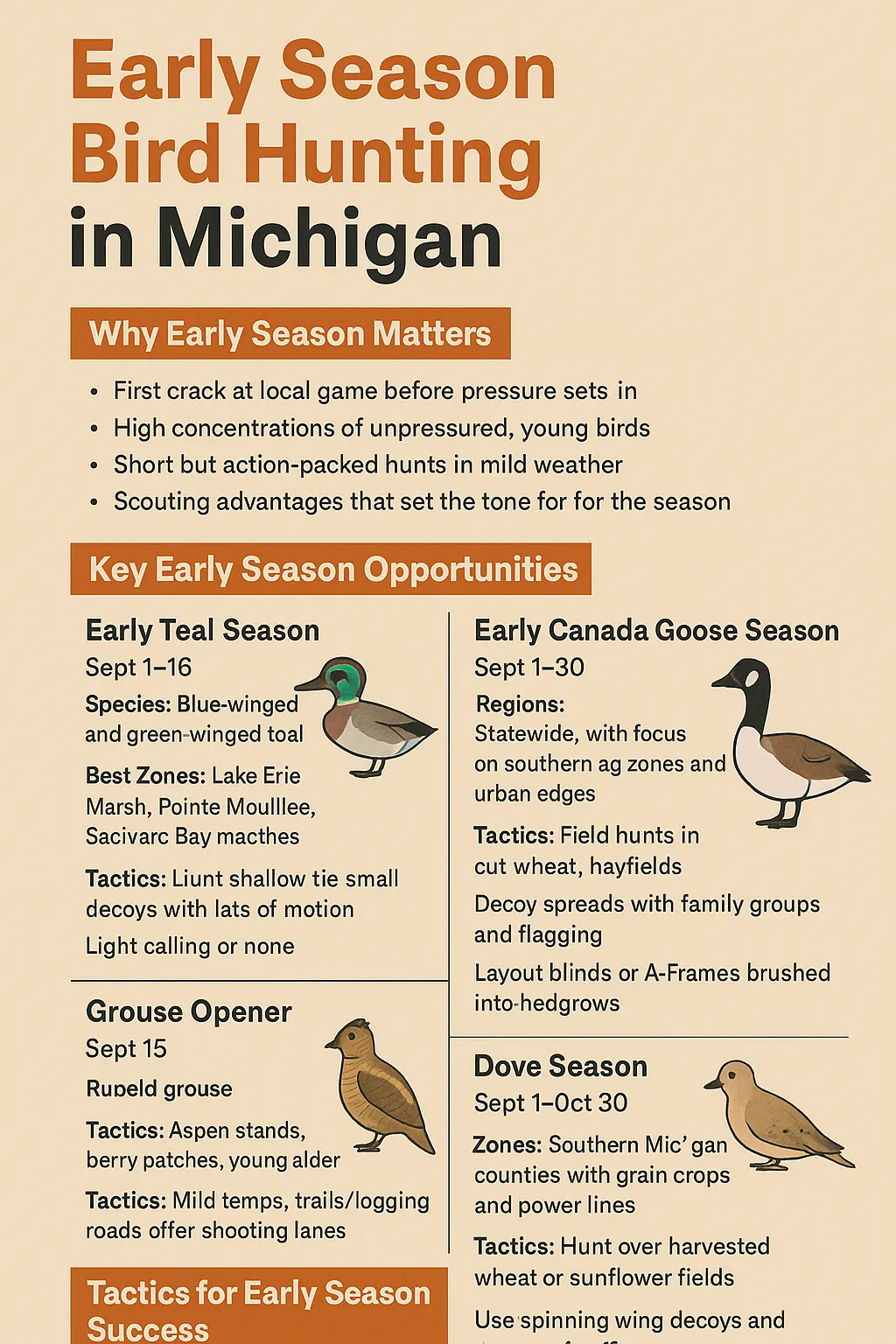
Regional Breakdown of Michigan Bird Hunting
From the rugged cedar swamps of the Upper Peninsula to the farm-dotted southern tier, Michigan offers diverse terrain and unmatched opportunity for upland and waterfowl hunters alike. With distinct seasons, landscapes, and bird species, knowing your region is the key to successful days afield. This is your go-to guide for where to hunt what—and how—in Michigan.
Upper Peninsula (U.P.): Wilderness & Woodcock
-
What to Hunt:
-
Ruffed Grouse, Woodcock, Ducks (especially divers), Canada Geese
-
-
Best Areas:
-
Hiawatha & Ottawa National Forests
-
Munuscong Bay, Little Bay de Noc
-
Escanaba River State Forest
-
-
Why Hunt Here:
-
Vast public lands and low hunter pressure
-
Prime young aspen regeneration and alder swales
-
Cold fronts trigger incredible duck and woodcock migrations
-
-
Style:
-
Foot hunts in logging cuts and bog edges
-
Layout boats or marsh canoes for divers
-
High chance for mixed bags and solitude
-
Northern Lower Peninsula: Timber & Transition
-
What to Hunt:
-
Ruffed Grouse, Woodcock, Mallards, Geese, Teal
-
-
Best Areas:
-
Pigeon River Country, Atlanta Forest Unit, Rifle River SGA
-
Lakes like Fletcher Pond, Hubbard Lake, and Manistee River corridors
-
-
Why Hunt Here:
-
Ideal mix of cover types: aspen, alder, tag swamp, farmland
-
Strong resident bird numbers and flight-path habitat
-
Grouse and woodcock overlap for combo hunts
-
-
Style:
-
Dogless timber walks or pointer-supported flushing
-
Shoreline marsh hunting and field setups for early goose
-
Saginaw Bay & Thumb Region: Diver Central
-
What to Hunt:
-
Canvasbacks, Redheads, Goldeneyes, Wigeon, Pintails
-
Canada Geese, Pheasants (inland)
-
-
Best Areas:
-
Fish Point, Nayanquing Point, Quanicassee
-
Crow Island, Tuscola & Huron Counties inland
-
-
Why Hunt Here:
-
Premier layout boat and diver duck hunting
-
Daily draw units offer controlled pressure
-
High-volume waterfowl traffic through fall
-
-
Style:
-
Open water hunting with long-line decoys
-
Upland walk-and-block tactics in CRP fields inland
-
West Michigan River & Lake Corridors: Versatility Zone
-
What to Hunt:
-
Mallards, Wood Ducks, Teal, Geese, Pheasant
-
Late-season divers along Lake Michigan bays
-
-
Best Areas:
-
Muskegon Lake, Grand River, Allegan SGA, Kalamazoo River delta
-
White Lake, Holland Marshes, Pere Marquette River mouth
-
-
Why Hunt Here:
-
Productive habitat for dabblers and divers alike
-
Field and marsh access near urban edges
-
Ideal for combo waterfowl-and-upland weekends
-
-
Style:
-
Boat-based morning shoots followed by mid-day pheasant runs
-
Flooded timber and oxbow hunting in river sloughs
-
Southern Lower Peninsula: Ag Fields & Access
-
What to Hunt:
-
Pheasants, Canada Geese, Teal, Mallards
-
Doves (early season)
-
-
Best Areas:
-
Branch, Lenawee, Calhoun, Hillsdale Counties
-
Sharonville SGA, Cornish Unit, Coldwater Marsh
-
-
Why Hunt Here:
-
Managed hunt areas with release birds
-
Private land programs (HAP) improve access
-
Ideal for beginning hunters and weekend warriors
-
-
Style:
-
Field hunting with layout blinds or A-frames
-
Walked-up pheasant pushes through CRP or ditch cover
-
Lake St. Clair & Detroit River Corridor: Marshland Mecca
-
What to Hunt:
-
Gadwall, Mallards, Teal, Wigeon, Geese
-
-
Best Areas:
-
Harsens Island, Pointe Mouillee, Lake Erie Marsh Unit
-
Detroit River International Wildlife Refuge
-
-
Why Hunt Here:
-
Premier managed wetlands with flooded impoundments
-
High numbers and species variety
-
Perfect location for early teal and late mallards
-
-
Style:
-
Draw hunts, boat blinds, walk-in impoundments
-
Coordinated group shoots and mobility tactics
-
Conclusion: A Bird Hunter’s Map of Michigan
No two regions hunt the same in Michigan. From aspen ridges in the U.P. to shoreline points on Saginaw Bay, each zone offers its own rhythm, species, and seasonal flow. The best hunters know when to pivot—riding the fronts south, scouting smart, and adapting tactics to terrain. In Michigan, bird hunting isn’t one season—it’s six regions, hundreds of covers, and a lifetime of wild wings.
“Bird hunters don’t follow trails. They follow regions—because the flight starts north, the birds turn east, and tradition runs deep across every field, swamp, and shoreline in the state.”
Leave A Comment
Related Posts
Late Season Bird Hunting Tactics in Michigan The leaves have […]
Early Season Bird Hunting in Michigan Before the frost settles […]

